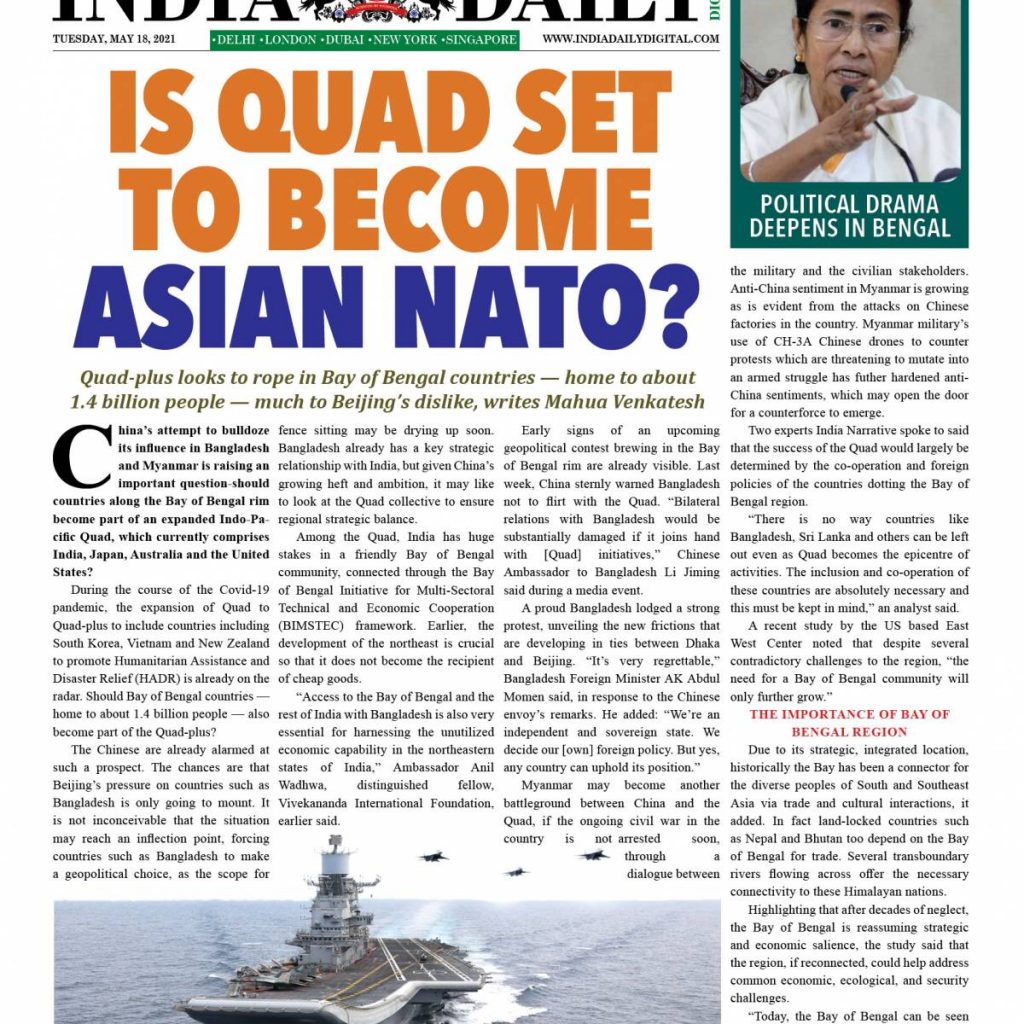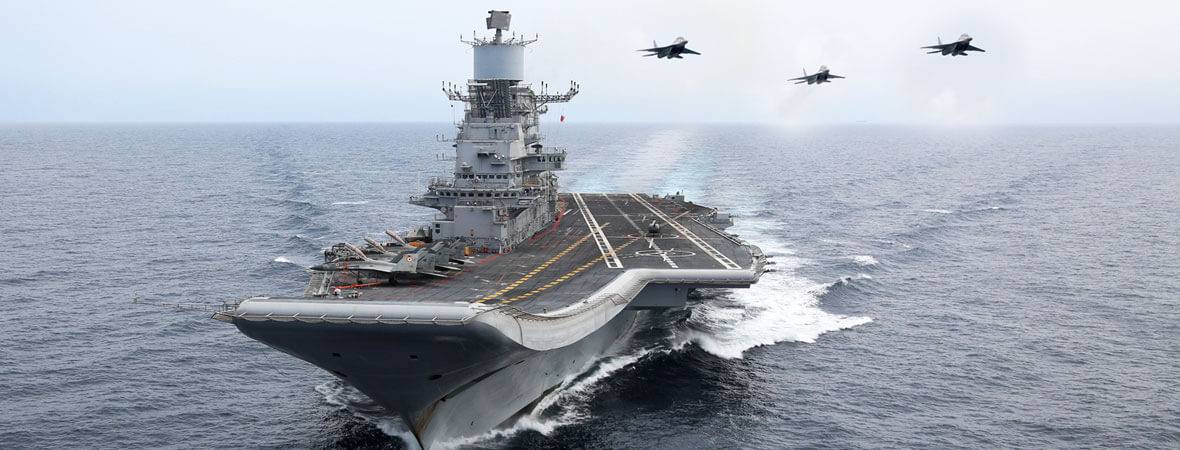Quad-plus looks to rope in Bay of Bengal countries — home to about 1.4 billion people — much to Beijing’s dislike, writes Mahua Venkatesh
China’s attempt to bulldoze its influence in Bangladesh and Myanmar is raising an important question-should countries along the Bay of Bengal rim become part of an expanded Indo-Pacific Quad, which currently comprises India, Japan, Australia and the United States?
During the course of the Covid-19 pandemic, the expansion of Quad to Quad-plus to include countries including South Korea, Vietnam and New Zealand to promote Humanitarian Assistance and Disaster Relief (HADR) is already on the radar. Should Bay of Bengal countries — home to about 1.4 billion people — also become part of the Quad-plus?
The Chinese are already alarmed at such a prospect. The chances are that Beijing’s pressure on countries such as Bangladesh is only going to mount. It is not inconceivable that the situation may reach an inflection point, forcing countries such as Bangladesh to make a geopolitical choice, as the scope for fence sitting may be drying up soon. Bangladesh already has a key strategic relationship with India, but given China’s growing heft and ambition, it may like to look at the Quad collective to ensure regional strategic balance.
Among the Quad, India has huge stakes in a friendly Bay of Bengal community, connected through the Bay of Bengal Initiative for Multi-Sectoral Technical and Economic Cooperation (BIMSTEC) framework. Earlier, the development of the northeast is crucial so that it does not become the recipient of cheap goods.
“Access to the Bay of Bengal and the rest of India with Bangladesh is also very essential for harnessing the unutilized economic capability in the northeastern states of India,” Ambassador Anil Wadhwa, distinguished fellow, Vivekananda International Foundation, earlier said.
Early signs of an upcoming geopolitical contest brewing in the Bay of Bengal rim are already visible. Last week, China sternly warned Bangladesh not to flirt with the Quad. “Bilateral relations with Bangladesh would be substantially damaged if it joins hand with [Quad] initiatives,” Chinese Ambassador to Bangladesh Li Jiming said during a media event.
A proud Bangladesh lodged a strong protest, unveiling the new frictions that are developing in ties between Dhaka and Beijing. “It’s very regrettable,” Bangladesh Foreign Minister AK Abdul Momen said, in response to the Chinese envoy’s remarks. He added: “We’re an independent and sovereign state. We decide our [own] foreign policy. But yes, any country can uphold its position.”

Myanmar may become another battleground between China and the Quad, if the ongoing civil war in the country is not arrested soon, through a dialogue between the military and the civilian stakeholders. Anti-China sentiment in Myanmar is growing as is evident from the attacks on Chinese factories in the country. Myanmar military’s use of CH-3A Chinese drones to counter protests which are threatening to mutate into an armed struggle has futher hardened anti-China sentiments, which may open the door for a counterforce to emerge.
Two experts India Narrative spoke to said that the success of the Quad would largely be determined by the co-operation and foreign policies of the countries dotting the Bay of Bengal region.
“There is no way countries like Bangladesh, Sri Lanka and others can be left out even as Quad becomes the epicentre of activities. The inclusion and co-operation of these countries are absolutely necessary and this must be kept in mind,” an analyst said.
A recent study by the US based East West Center noted that despite several contradictory challenges to the region, “the need for a Bay of Bengal community will only further grow.”
Due to its strategic, integrated location, historically the Bay has been a connector for the diverse peoples of South and Southeast Asia via trade and cultural interactions, it added. In fact land-locked countries such as Nepal and Bhutan too depend on the Bay of Bengal for trade. Several transboundary rivers flowing across offer the necessary connectivity to these Himalayan nations.
Highlighting that after decades of neglect, the Bay of Bengal is reassuming strategic and economic salience, the study said that the region, if reconnected, could help address common economic, ecological, and security challenges.
“Today, the Bay of Bengal can be seen as a crucial part of the Indian Ocean with growing strategic interest and importance to global actors,” it said.
ALSO READ-Quad-backed India and France may have to counter IS in Mozambique














